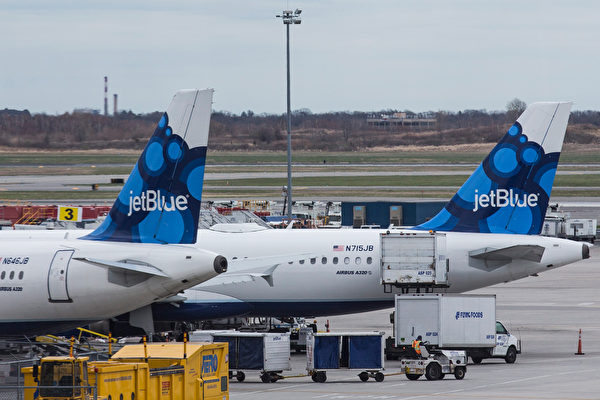Newark Liberty International Airport, located in the eastern part of New Jersey, United States, is situated approximately 9 miles (14.5 kilometers) from Manhattan, New York City. It is the second-largest airport in the New York metropolitan area, after John F. Kennedy International Airport, and is one of the busiest airports in the United States.
The airport is also one of the major hubs for United Airlines. Its air traffic control facilities experienced three communication interruptions within a two-week period, including a 90-second radar and radio communication interruption that occurred last Friday on May 9th.
The ongoing chaos at Newark Airport has exposed the issue of aging aviation infrastructure in the United States. United Airlines, which operates primarily from this airport, has faced increasing flight delays, cancellations, and deteriorating financial conditions, leading to long-term damage to its reputation.
As one of the three major airports in the New York metropolitan area, Newark Airport is a key aviation gateway on the East Coast of the United States, having welcomed over 48 million passengers last year.
The Federal Aviation Administration (FAA) announced on May 7th that it would implement a series of technological upgrades and manpower reinforcements to address the recent widespread flight disruptions caused by air traffic control errors and staffing shortages at the airport.
With around 70% of flights at Newark Airport operated by United Airlines, the impact of the airport’s problems on the airline is far greater than on its main competitors, Delta Air Lines and American Airlines, whose passenger shares at the airport are only 5% and 4%, respectively.
The timing of the disruptions is particularly bad as the summer travel peak season is approaching.
Newark serves as a crucial hub for United Airlines’ lucrative transatlantic routes, while Delta Air Lines and American Airlines opt to use JFK Airport.
According to data from flight tracking website FlightAware, since the severe effects of air traffic controller shortages and airspace restrictions began on April 26th, United Airlines has experienced over 9,000 domestic and international flight delays, accounting for approximately 26% of its planned flights in its network, with around 2% of flights being canceled.
Passengers’ frustration is escalating, with many passengers last week expressing shock over concerns about pilots facing difficulties in landing planes safely.
United Airlines CEO Scott Kirby mentioned in an interview on CBS’ “Face the Nation” program on Sunday that these interruptions would have financial implications for the company, with former CEO Oscar Munoz stating that the impact could be “very serious.”
Industry officials and analysts believe that United Airlines’ strategic move in 2016 to consolidate operations at Newark Airport and exit JFK Airport has led to its current predicament.
Munoz described the strategy as “short-sighted” and one of the company’s “most serious mistakes.” Kirby also acknowledged the decision as a mistake and expressed United Airlines’ desire in March to maintain operations at JFK Airport.
A report by Reuters in April stated that United Airlines is in negotiations with JetBlue Airways for potential collaboration, aiming to pave the way for United Airlines to regain a foothold at JFK Airport. Munoz mentioned that “for companies like United Airlines, returning to John F. Kennedy International Airport would be very beneficial.”
In 2021, United Airlines attempted to return to JFK Airport by utilizing temporary landing slots provided during the pandemic, but failed to secure enough slots to remain competitive, leading to the cessation of operations at the airport a year later.
(Reuters reporting was referenced in this article)

